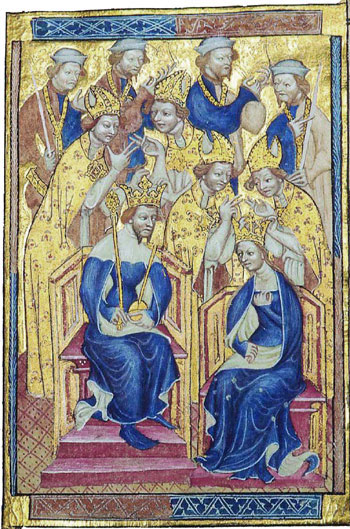
Every Christmas, we expect the Royal Family to go to Sandringham for their annual Christmas Day church service and later, hear a speech from the Monarch. While that is the tradition in the 21st century, the days of the Royal Family celebrating Christmas in a big way date back centuries.
[getty src=”517475910″ width=”380″ height=”594″ tld=”com”]Let’s start in December 1066 when on Christmas Day, William the Conqueror was crowned King, months after defeating Harold II at the Battle of Hastings. Nearly 30 years later in 1095, Stephen of Blois was born and named after St Stephen, the first martyr of Christianity. Boxing Day, the day after Christmas is also known as St Stephen’s Day. He would become King of England in 1135.
In 1171, King Henry II travelled to Ireland to spend the holidays in Dublin. To do so, he had a Winter Palace built for the occasion. At the huge Christmas feast, people dined on swans, wild geese, peacocks, and herons.
[getty src=”507174393″ width=”594″ height=”459″ tld=”com”]In 1199, King John was crowned at the start of what would be an infamous reign with heavy taxation and unsuccessful attempts to reclaim his French possessions. In addition, he had disputes with the Church and was excommunicated by the Pope in 1209. Throughout the years, his barons rebelled which forced the king to sign a peace treaty accepting reforms. This treaty, later known as the Magna Carta, would limit royal powers. King John’s reputation would become a poem by AA Milne, King John’s Christmas. An excerpt from the poem reads:
“King John was not a good man, and no good friends had he. He stayed in every afternoon…But no one came to tea. And, round about December, the cards upon his shelf which wished him lots of Christmas cheer, and fortune in the coming year, were never from his near and dear, but only himself.”
His successor, Henry III, seemed to have more positivity surrounding his holiday celebrations. When The King celebrated Christmas at Woodstock Palace, the Sheriff of Oxford supplied five boars, nine dozen fowl, 30 oxen, and 100 sheep. In addition, salted version was brought in from Wiltshire, lamprey and salmon from Gloucester, and six tuns (large wine casks) of new wine from Bristol and 13 from Northampton were brought in. Christmas in the Middle Ages was known as one of the greatest feasts of the year. It was expensive to feed livestock during the winter so most were killed to be eaten.
While many exchange gifts on Christmas Day, that was not the case in the Middle Ages. Gifts were usually exchanged at New Year or on the Twelfth Night. In 1392, the citizens of the City of London gave Richard II a one-humped camel and pelican.

